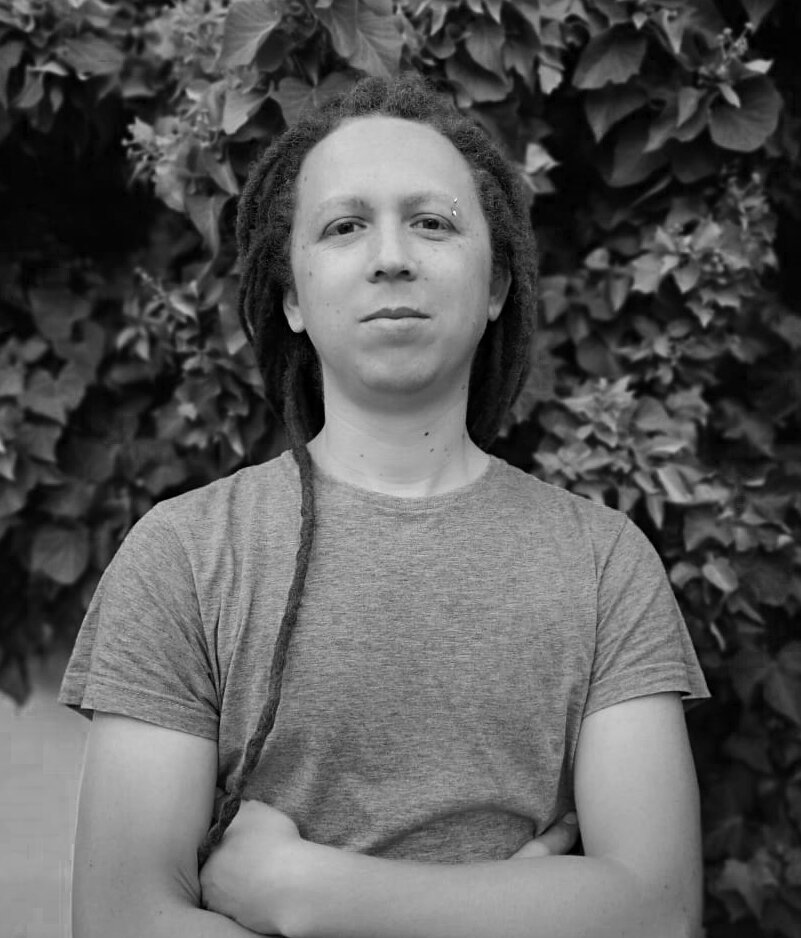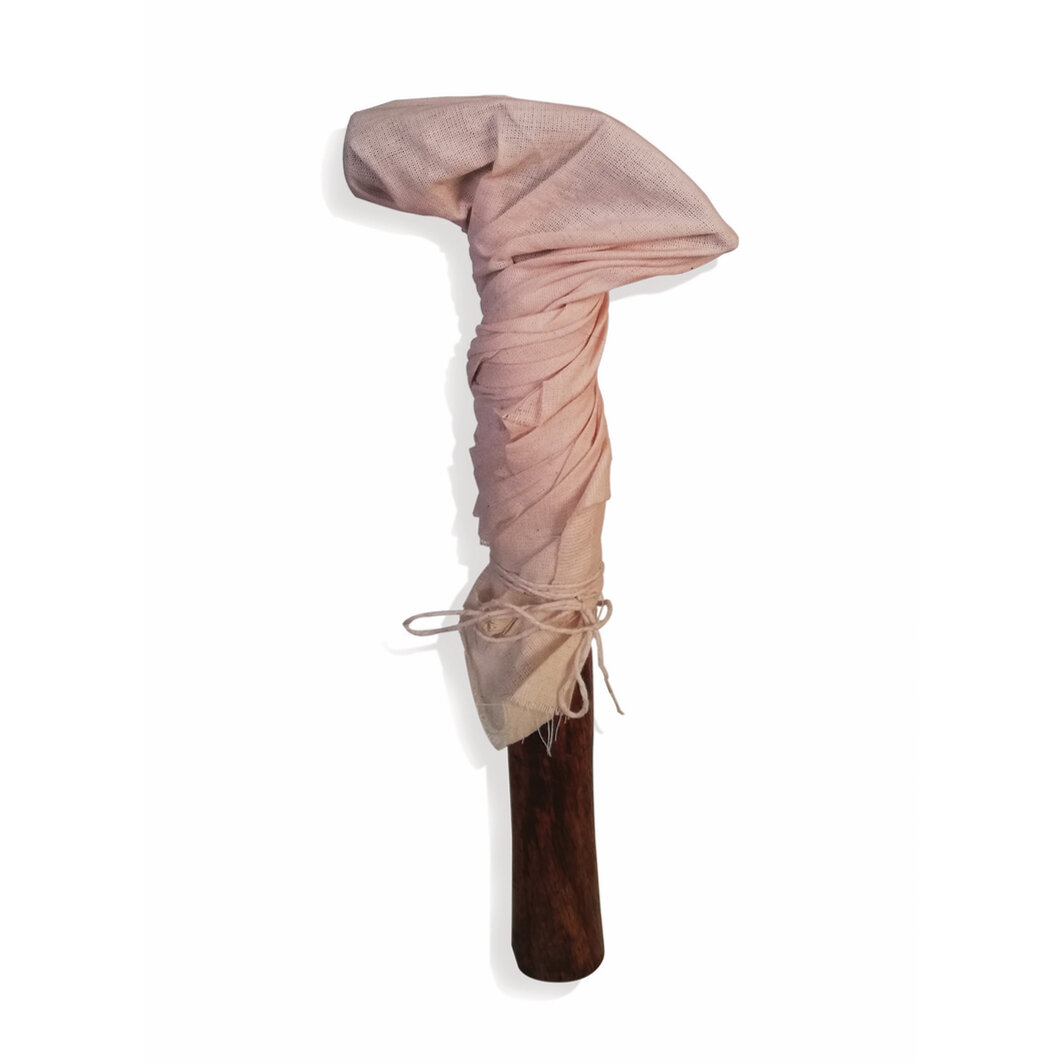Warren Maroon
Packing a punch
Portrait of the artist: Warren Maroon
“I was eleven years old when I witnessed, what was then the first of many murders; for as long as I live on the Cape Flats, this scene has been a repeated experience. It’s difficult – witnessing kids kill each other. It’s even harder to pretend that it didn't happen and to, out of fear, continue playing soccer with them.” – Warren Maroon
Warren Maroon, Verdwyn, 2020, Hammer and cloth, 31 x 3 x 3 cm
Warren Maroon’s first solo show, Living in a Box: a Retrospective, is a body of sculptural works that communicate his, and many others', lived experience of growing up on the Cape Flats. Made up of ordinary, seemingly insignificant objects and household items, and titled strategically, each work contributes to the recreation of an experience that is both individual and shared by a past and present community.
Each artwork draws on specific events that occurred throughout his life; some which he experienced as a bypassing witness, some which he experienced as member of a community racked with the acidic and brutal legacy of apartheid. While a new dawn may have brushed the country, the deep crevices of social and economic inequity have remained, many years later – each work seeks to either draw attention to this, or to reframe and reconstitute the meaning of living in and experiencing the Cape Flats.
Warren Maroon, Not Excalibur, 2019, Found bricks and Okapi knives, Variable dimensions
Not Excalibur talks to the relationship people have with power when it is not obtained in constructive ways. Many of my childhood friends were unable to experience any sense of power in their households, be it something as small as an opinion, and as a result went looking for it elsewhere. Violence seemed to be the easiest way of obtaining a sense of power, especially when rooted in fear, so they joined gangs. The story of Excalibur, the sword in the stone, speaks of only one man being able to remove the sword from the rock to wield the power. Not Excalibur simply shows how, through violence, accessible power is. – Warren Maroon
Warren Maroon, The tension between knowledge and knowing, 2018, Found objects on brick, 16 x 21 x 11 cm
The sprawling meaning and loaded denotations of each object, as a sign, hold both mundane and murderous significance – objects that live in the duality of use as both a wielding weapon and a poor-child’s toy. Knives, a zip gun, brick, beer bottles, glass and rope are but some of the repurposed objects Warren has used for his sculptures, each holding this multiplicity of meaning, function and memory in the mind of a present, or past Cape Flats inhabitant.
Warren Maroon, Wakker Slaap, 2020, Found burglar bar in frame, 112 x 59 cm
"Wakker Slaap" speaks about the relationship between police and criminal entities such as drug merchants and gangs. Growing up, I would often see policemen waiting outside of merchants' houses to arrest anyone that would go and buy drugs. I always found this relationship peculiar, the people that are put into positions to protect civilians from the criminal activity are the ones protecting them. The dichotomy of security seems to have a similar relationship; you build something to keep elements out while simultaneously keeping things in.” - Warren Maroon
There are no grand statements, no positive falsities postulated, nor a desire to conceptually reframe lived experiences. Rather, there is a need to contribute to a growing body of literary, visual, and sociological imagery and text of this community, by its members, in fierce and personal depictions. In doing so, the artist works for the community. Not to the benefit of the outsiders, wishing to unlearn or understand, but for the insiders – the kids, both grown or passed, both free or incarcerated, whose stories and lives deserve to be seen authentically.
Warren Maroon’s first solo show, Living in a Box: a Retrospective is currently on show as a virtual exhibition. Click here to explore further!





